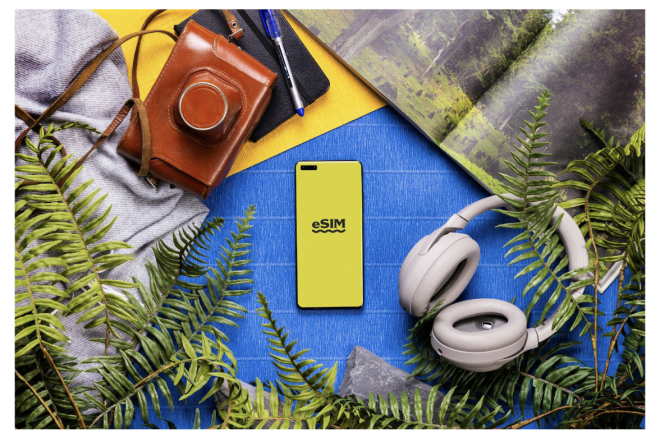- Change theme
eSIM vs. Traditional SIM: Which One Is Better for Modern Travelers?

Discover the key differences between eSIMs and traditional SIM cards for travellers. Find the best option for staying connected on the go.
23:29 25 February 2025
For years, swapping out a physical SIM card was the norm for travellers looking to stay connected abroad. But with the rise of eSIM technology, the game is changing. No more fumbling with tiny plastic chips or searching for a local SIM at the airport—just a quick digital setup, and you're good to go.
But is eSIM actually the way forward for today's travellers, or is the reliability of a normal SIM still better? In this piece, we'll examine both types and advise you on which is better for your travel lifestyle.
What is an eSIM?
An eSIM, which stands for embedded SIM, is a digital version of the traditional SIM card built directly into a mobile phone’s hardware. Instead of inserting a physical SIM, users can activate an eSIM remotely by scanning a QR code. They can also download something called a carrier profile to set things up.
What is a Traditional Sim?
A standard SIM (Subscriber Identity Module) is a small, removable mobile phone card that contains information connecting an individual to a cellular network. It comes in different sizes and is usually locked on one carrier unless it is unlocked.
Comparing an eSIM to a Traditional Sim
Convenience and Installation
Ease of installation and switching between networks is vital for international travellers. Normal SIM cards require users to buy a physical card, put it in the phone, and, in some cases, perform a manual installation.
Buying a local SIM when arriving in another country might be inconvenient, especially if a traveller has a SIM already installed in their phone but with an eSIM, like those found on Holafly’s website, users will be able to remotely switch to a new plan by simply scanning a QR code or importing a carrier profile without the need to change physical chips.
Coverage and Network Reliability
Physical SIMs are carrier-locked with great coverage in their respective coverage areas. Purchasing a foreign SIM in your destination country gives you access to the top-ranked carriers in the country. These generally offer better speeds and service than you would otherwise have through international roaming on a SIM from your home country.
If a user wants to switch networks to get better connection, however, they usually have to physically swap the SIM cards, but eSIMs offer greater flexibility as travellers can change carriers without the need for physical cards. This is especially useful in countries where networks have different coverage levels.
Cost Comparison
While utilizing a physical SIM overseas, international roaming data charges can be very high. Travellers who neglect to regularly turn off their mobile data may accumulate significant expenses.
Many providers impose high charges for international roaming, particularly for data usage. This makes even basic tasks like checking maps or sending messages quite expensive.
An eSIM offers a wiser alternative by allowing you to simply connect to regional data plans easily without needing to buy and swap out a physical SIM card. This means that instead of relying on expensive roaming by your home network, you can use an inexpensive regional or national plan.
Environmentally Friendly
eSIM technology eliminates the need for physical SIMs. These chips are made of plastic and come with extra packaging. This contributes to significant waste that often ends up in landfills.
With a digital sim, plastic use can be reduced, lowering the carbon footprint from production, shipping, and disposal and making them a sustainable choice for travellers.
eSIM vs Traditional Sim: Which SIM Option Should You Choose?
Both eSIM and traditional SIM cards have their advantages. eSIM emerges as the better choice for modern travellers due to its convenience, flexibility, and cost-effectiveness.
Although traditional SIM cards may still be useful in regions with limited eSIM support, the future of mobile connectivity is undoubtedly digital. As more carriers worldwide adopt eSIM technology, it's becoming the smarter, more efficient option for staying connected wherever you go.
